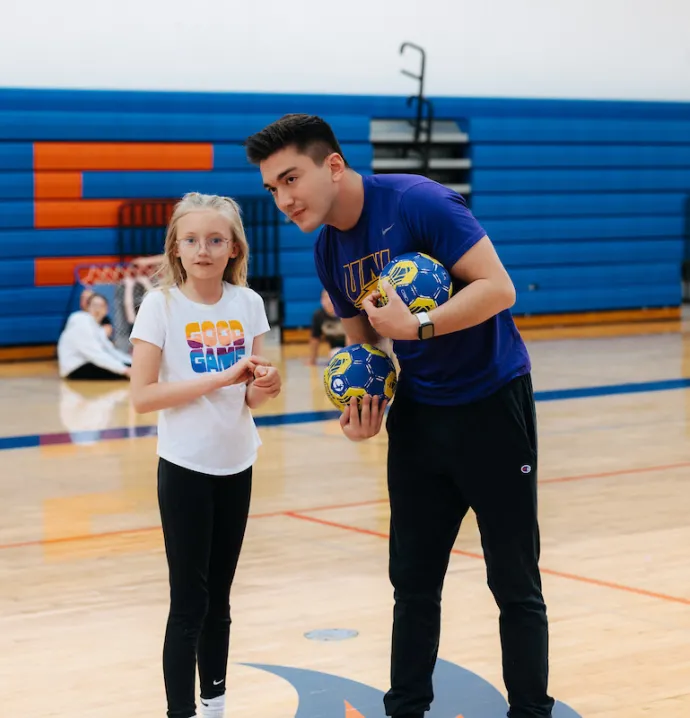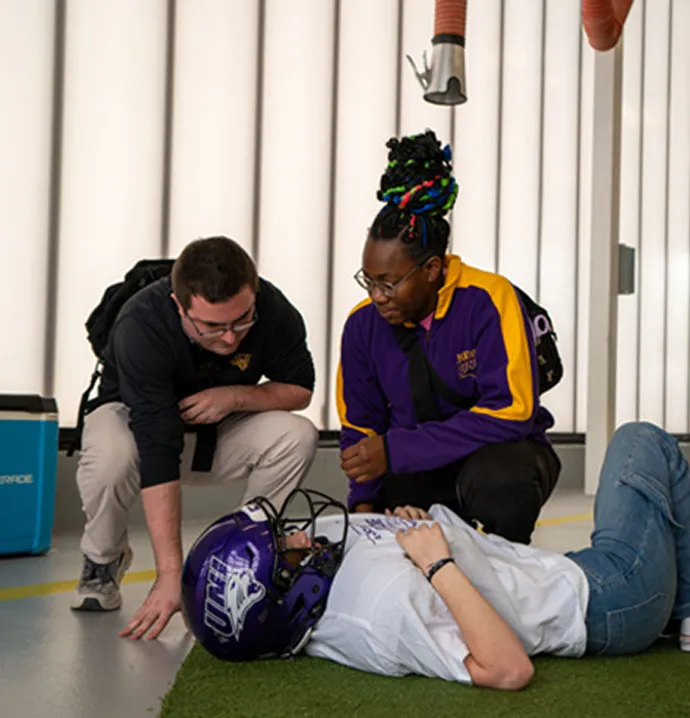Re-examining history
Re-examining history
A University of Northern Iowa professor’s historical research is receiving national attention as several New England communities grapple with the legacy of controversial statues.
Professor Barbara Cutter has been interviewed in multiple national outlets about her research on Hannah Duston, a 17th century English colonist who murdered 10 Native Americans, including two women and six children.
Duston had been kidnapped in an Abenaki raid in 1697 in Haverhill, Massachusetts, and lost her infant in the hostilities. Her captors placed her with a Native American family about 60 miles north in New Hampshire. She and two fellow captives killed and scalped 10 members of the family and escaped. The atrocities happened during King William’s War — one of many colonial disputes between the English and French in which many Indigenous people in northern New England allied with the French to fight further English expansion onto their lands.
The Duston monuments, erected more than 170 years after the woman’s kidnapping, show Duston in action. One statue in a city park in Haverhill, Massachusetts, portrays Duston gripping a hatchet. The second monument in Boscawen, New Hampshire, an hour’s drive north of Haverhill, shows Duston wielding a hatchet in one hand and a handful of Native American scalps in the other.
Cutter said the statues’ stories should get a wholesale overhaul and a far broader historical perspective because they currently tell a story that reflects their origins: That violence against Indigenous people was innocent and justified, and that Duston represented an innocent, wronged mother.
“By extension, the U.S. violence against Native American people is represented as innocent and justified,” said Cutter, a native of Andover, Massachusetts, who specializes in women’s history.
The statues also tell a story that Indigenous people were inherently violent and were incapable of being members of American society, Cutter said.
“Obviously, that’s inaccurate history, but more importantly, it’s anti-democratic,” she said. “It’s saying not all people who live in America count as Americans.”
“The question we should ask about these monuments is whose stories are being told? The full story needs to be told. No one should be left out,” said Cutter, who has taught History at UNI for 21 years after having earned her bachelor’s degree in Russian studies at Columbia University in New York, and her Ph.D. in History from Rutgers University. “You don’t cherry pick one perspective or another.”
The media attention reflects the depth of academic research that UNI students benefit from, said history professor and department head Jennifer McNabb.
"Professor Cutter is a scholar with a wide reach because of her intentional engagement with academic and popular audiences alike,” McNabb said. “Her projects on Hannah Duston thoughtfully explore the nature of U.S. national identity, public memory, and monuments, topics of interest to the public but also important to UNI students' understanding of history.”
Decisions on what to do about the Duston monuments should involve discussions among all interested parties, and should focus on the issue of how to tell history that is both accurate and inclusive, Cutter said.
The controversies over statues and their racist or genocidal pasts spread worldwide a year ago after George Floyd’s murder during his arrest by Minneapolis police officer Derek Chauvin. Chauvin, who is white, knelt on Floyd’s neck for nine minutes and 29 seconds. On April 21, a jury found Chauvin guilty of second-degree murder, third-degree murder and manslaughter following a three-week trial.
“Monuments are what we decide are important – the stories we decide we’re going to tell, to commemorate,” Cutter said. “They should reflect the whole history of all people in American society.”
Those stories extend to how we think about and judge women — and the #MeToo movement has heightened that conversation.
The Duston monuments reflect the almost universally accepted idea in 19th century America that women were inherently more moral than men, said Cutter.
That argument cuts both ways. While women’s moral underpinning was used to argue for their right to vote prior to passage of the 19th amendment, it also upholds a double standard that has been used to punish women for conduct deemed immoral.
The double standard was questioned in the 20th century, especially starting in the late 1960s and early 1970s during the second wave of feminism, which brought new attention to sexual harassment and sexual assault, and laid important foundations for the #MeToo movement, said Cutter, author of the book, “Domestic Devils, Battlefield Angels: The Radicalism of American Womanhood 1830–1865” (Cornell University Press).
“The double standard has been challenged, but the dynamic is not dead,” she said.




